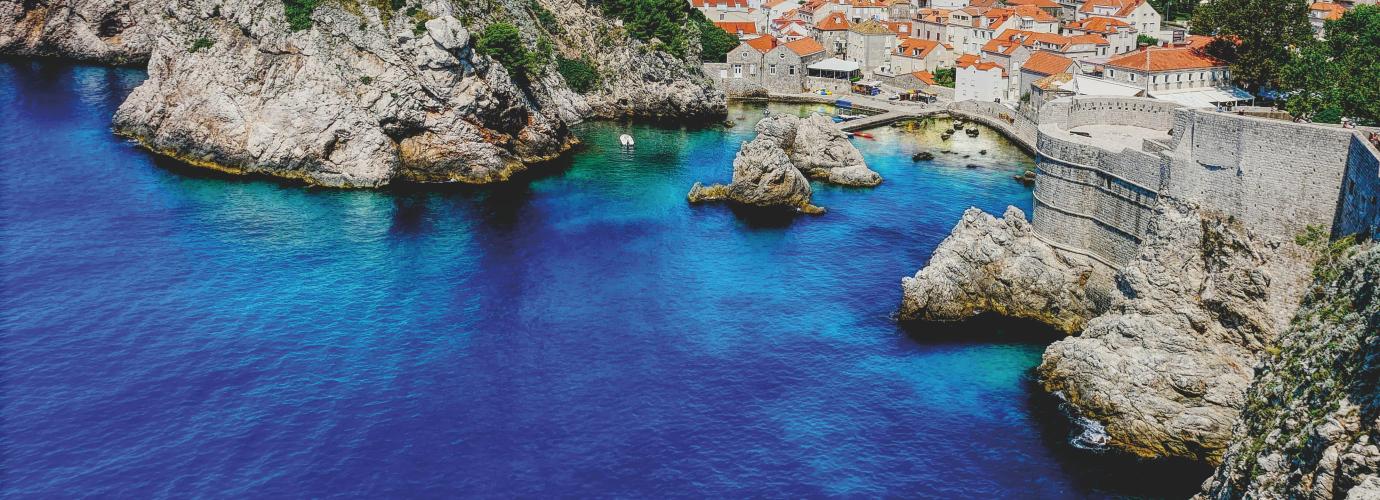The territory of what is nowadays the Republic of Croatia was already inhabited in the prehistoric time. The most known sites of early human life in Croatia are Krapina (Stone Age, cca 100.000 years BC) and Vučedol (Copper Age, cca 3.000 years BC). During the first millennium BC northern parts of Croatia were inhabited with Pannonians, and southern parts with Illyrians. In the 4th century BC the Greeks started to establish colonies along the Croatian coast. Their colonies Faros (Stari Grad), Issa (Vis) and Tragurion (Trogir) are the oldest settlements in Croatia.
In the 3rd and 2nd century BC all the territory of nowadays Croatia was conquered by Romans who divided it between two provinces – Illyricum and Pannonia. During the 2nd and 3rd century AD, Christianity became more and more popular among the inhabitants of the two provinces. Christianity became dominant in the 4th century. By the end of the 6th century, Slavic tribes started to settle in Pannonia and Illyricum. According to the known historical documents the Croats came to nowadays Croatia with the last wave of Slavic migration in the 7th century.
During the 9th century first records of Croatian state emerged, and in the 10th century Croatia became a Kingdom. For the next two centuries Croatians had rulers from their own dynasties, but at the beginning of the 11th century Hungarian kings managed to come to the Croatian throne. From that time Croatia started its long history of living in a political union with Hungary which lasted till 1918.
During the early modern period (15th-18th century) Croatia was divided between three states – Habsburg Monarchy, Ottoman Empire and the Venice Republic. At that time, a small Ragusan Republic flourished due to its great diplomacy, and Dubrovnik (Ragusa) became “Athens of Croatia”. In the 19th century Croatia was affected with a number of modernizing processes. In the same century Croatian national movement managed to establish Croatian language as the official language in administration and education. The revolution of 1848 resulted with the fall of the ancient regime and with the beginning of a modern civil state. After the First World War Croatia became part of the Kingdom of Serbs, Croats and Slovenes (later Kingdom of Yugoslavia). In 1941 the Ustashe (Croatian extreme nationalists) established The Independent State of Croatia, a puppet state of the Third Reich, but in 1943 Croatian anti-fascists established their own government (ZAVNOH) of the future Republic of Croatia.
After the end of the Second World War, Republic of Croatia became federal republic in the Socialist Federal Republic of Yugoslavia (SFRJ), together with Serbia, Macedonia, Monte Negro, Bosnia and Herzegovina and Slovenia. After the death of President Josip Broz Tito in 1980, Yugoslavia descended into an economic and social crisis. Political confrontations between the leaders of the republics were renewed. First multi-party elections were held in 1990 and the wining party was Croatian Democratic Union (HDZ), which guaranteed the protection of national interests. The leader of the HDZ, Franjo Tuđman, was elected was elected as President of Croatia by the Parliament. New Constitution was adopted at the end of 1990. The Declaration on the Proclamation of the Sovereign, Independent Republic of Croatia and the Ruling on the abrogation of public law relations with the remaining republics and provinces of the Socialist Federal Republic of Yugoslavia, i.e. Yugoslavia were adopted in 1991. Croatia proclaimed its independence on 8th of October 1991 and ended its relations with Socialist Federal Republic of Yugoslavia.
Armed conflict broke out in 1991, as the Yugoslav People’s Army (JNA) gradually joined the Serb rebels. The Parliament adopted the Defence Act, by which the Croatian armed forces were organised but were considerably weaker than the JNA. From August 1991 onwards, initial skirmishes grew into direct aggression by the JNA, Serbia and Montenegro, so that Croatia was forced to fight a defensive war, known as the Croatian War of independence (in Croatia called Homeland War), in which over 14,000 people were to die on the Croatian side by the time it ended in 1995 with the Dayton Peace Agreement. From that time Croatia started the process of Euro-Atlantic integration.
In 1992, Croatia became a member of the United Nations, in 2009 it was accepted in NATO and in 2013 it became the 28th member state of European Union.
Croatia presides over the Council of the European Union in the first half of 2020.
Source:

